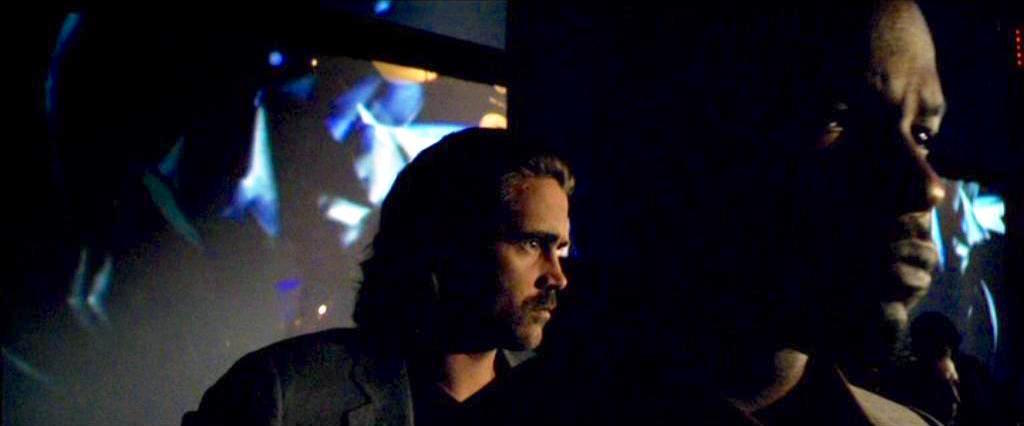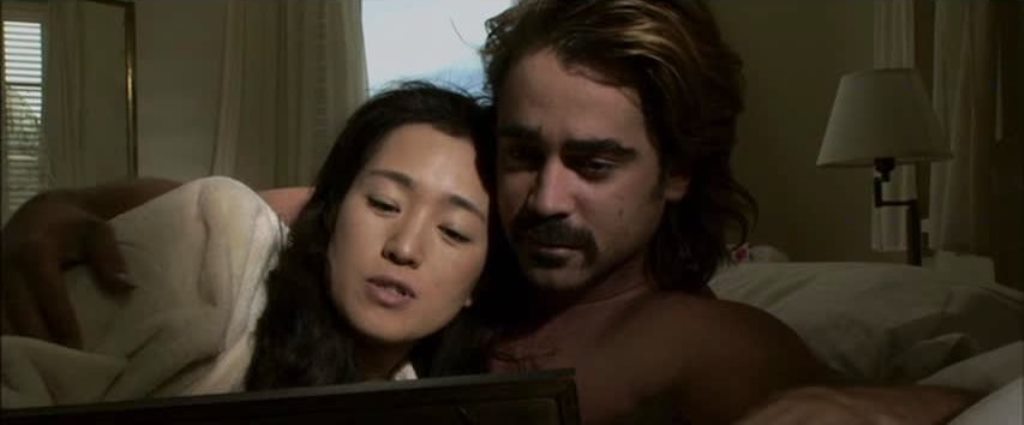Please welcome back new contributor Bill Curran for a 10th anniversary look at Miami Vice
 The major studio head-scratcher of its year, the ultimate distillation of Michael Mann’s brand of clean sheen noir, and the most authentically auteurist film of the aughts, Miami Vice was the movie offspring of a successful and ever-parodied 80s TV series that was nothing like the original. Instead, Mann unleashed a brooding and voluptuously pixilated peacock of a crime thriller upon an unsuspecting public
The major studio head-scratcher of its year, the ultimate distillation of Michael Mann’s brand of clean sheen noir, and the most authentically auteurist film of the aughts, Miami Vice was the movie offspring of a successful and ever-parodied 80s TV series that was nothing like the original. Instead, Mann unleashed a brooding and voluptuously pixilated peacock of a crime thriller upon an unsuspecting public
If only every recent remake had as much reckless spirit as this one did when it opened nationally ten years ago today. Though the film received favorable notices from top print critics, including a rave from A.O. Scott, the majority of reviewers (and almost all audiences) were simply confused...
In hindsight, the perception of Miami Vice as a curious aesthetic experiment with fizzled box office returns had as much to do with Mann’s refusal to invest the movie and its new Crockett and Tubbs (Colin Farrell and Jamie Foxx) with the same pop faux-gravitas employed by TV leads Don Johnson and Philip Michael Thomas, as it did with the director’s daring leap forward into the digital filmmaking vanguard.
For starters, Michael Mann was one of the original series’ creators; he went on to become among the most respected (if notoriously irascible) studio directors with cultural touchstones like The Last of the Mohicans and Heat. Midway through the 00s, Mann was hired to make Miami Vice hot off the Academy Award-approved successes of Ali and Collateral. After a tumultuous production (which included a shooting, a hurricane, and a rumored $50 million overage to the budget), Universal still decided to go full throttle on the project, marketing the movie as, basically, the series writ large: a seriously cool summer action romp with a gaudy synth soundtrack and the same pastel suits we’d grown to love and mock.

Or maybe the suits were just as perplexed as the future critics and moviegoers. Michael Mann brought to the movie Vice a present-tense yet dreamy quality to a deadly serious narc detective plot, buzzing from scene to scene with little interest in easy audience hooks such as a triumphant arc and quip-filled characters. What matters most here is Crockett and Tubbs’ work (that would be the “vice” part), where horrible stuff—neo-Nazi gangs with military weapons, C-4 bombs, highway suicides—plays out over the whole of Magic City. There is no romantic version of Miami or their job. For every image of the rippling, purple night sky or the jewel-like marriage between sea and sky, there is a dusty freighter yard and a dilapidated trailer park, all captured with exacting clarity by Mann and cinematographer Dion Beebe.
Sure, in the wrong hands, digital-based movies can look sloppy, slapdash, with an all-in-so-it's-all-good attitude to coverage: it's easier to shoot so why compose a shot? Celluloid forces choices and great filmmakers, the best, exploit this challenge. But Miami Vice is a near miraculous case for the digital. Mann uses it to give vibrancy and immediacy to every action. Every glance, punch, piece of fabric, sun flare, and cloud is recorded with the weight of the always-right-now; there are no traditional movie lighting schemes, necessitated by the way light is rendered on film, to shape our experience. Film requires this attention to plotting specific aspects of light in any given scene. Digital captures all light. It’s all attention, all the time. Every moment counts.
This inherent component to digital finds its precise complement in the vice unit’s police work. Crockett and Tubbs, the thugs and big-money crooks, all must be ready, alert, alive to the moment. It’s a matter of loyalty, reading people, sealing the deal. It’s also a matter of not dying, or what is summed up with succinct fortune cookie poetry by Gong Li’s beautiful financial adviser to the drug lords:
Leave now. Life is short. Time is luck.
Capturing exact moments in digital here means reveling in something as wonderful as every drop of sea mist hitting two budding lovers’ faces during a spontaneous speedboat jaunt to Cuba, or as lethal as a bullet traveling twenty-seven hundred feet per second. Every scene is constructed around the digital choice, and Miami Vice wouldn’t be a fraction of the movie it became without its pixels. Few, if any, Hollywood directors have dared to exploit the possibilities of the Thompson Viper camera to these meticulous formal means.

So what made and still makes Miami Vice stick out from Mann’s work, despite its obvious ridiculousness, including the tawdry, impossible-to-follow narrative turns and Farrell’s lion’s mane of a hairdo (not to mention too much talk of mojitos)? The cultish devotion of critics at online zines like Reverse Shot and Slant Magazine certainly helped keep the motor humming on this glistening oddball masterpiece, at least in the minds of cinephiles. And Mann has continued the digital aesthetic charge, though with decidedly less verve: operating in some of the same Vice milieu in the uneven if still riveting ‘net hacking thriller Blackhat, and giving the classic John Dillinger story an almost documentary quality to the period gloss of Public Enemies.
Yet Miami Vice, if its nascent legacy bears upholding, shines on as a testament to Mann as a singular and rather fearless moviemaker. When handed his biggest Hollywood toolbox, to the tune of a $100+ million budget, he pushed his style and thematic interests to their limits. In doing so, in forgoing straight-forward cineplex pleasures for something riskier and more personal, it’s as if Mann were sitting beside Farrell and Li at the same desolate beach house at Vice’s end, with a grey cloudy night settling in over Miami and a romance. Farrell’s reverse of Li’s earlier motto speaks volumes for the characters, the film, and Mann:
Luck ran out. This was too good to last.”
